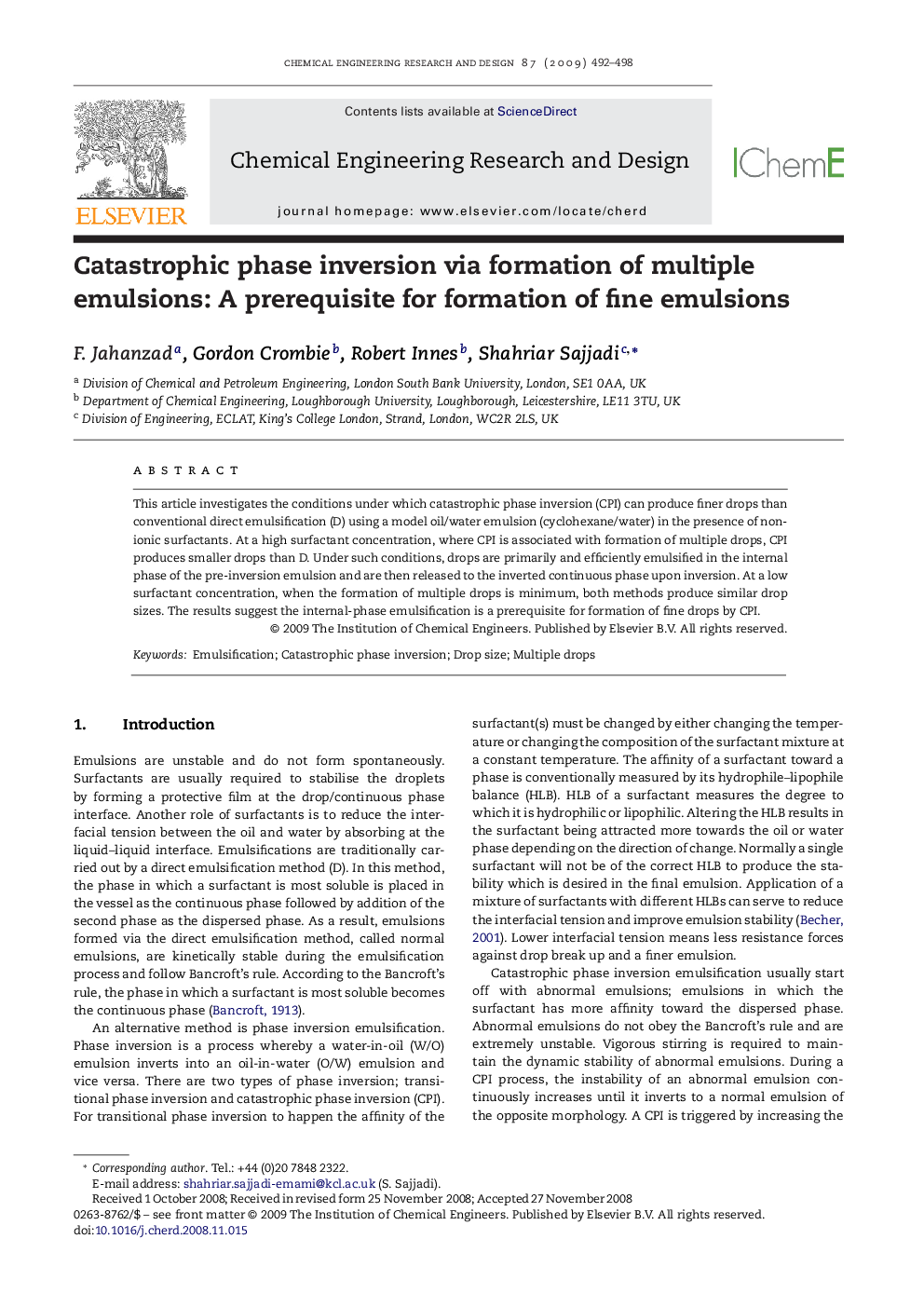| Article ID | Journal | Published Year | Pages | File Type |
|---|---|---|---|---|
| 622394 | Chemical Engineering Research and Design | 2009 | 7 Pages |
This article investigates the conditions under which catastrophic phase inversion (CPI) can produce finer drops than conventional direct emulsification (D) using a model oil/water emulsion (cyclohexane/water) in the presence of non-ionic surfactants. At a high surfactant concentration, where CPI is associated with formation of multiple drops, CPI produces smaller drops than D. Under such conditions, drops are primarily and efficiently emulsified in the internal phase of the pre-inversion emulsion and are then released to the inverted continuous phase upon inversion. At a low surfactant concentration, when the formation of multiple drops is minimum, both methods produce similar drop sizes. The results suggest the internal-phase emulsification is a prerequisite for formation of fine drops by CPI.
